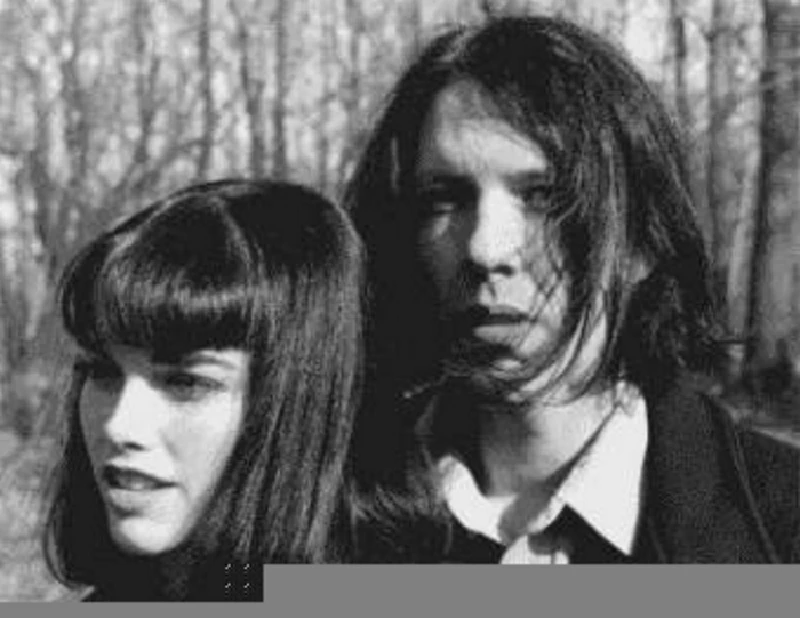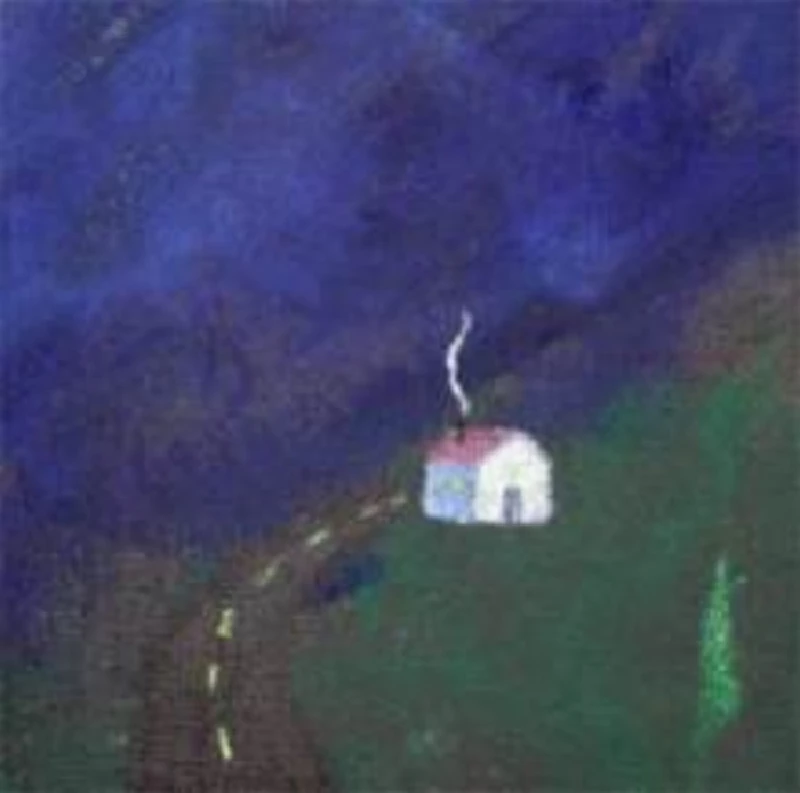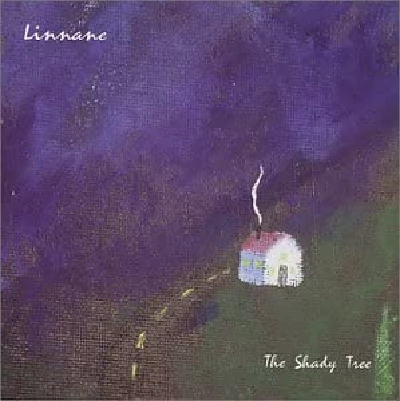Linnane - interview
by John Clarkson
published: 25 / 9 / 2002

intro
Bridging the gap between alt. country and pop, 'The Shady Tree' is the debut album of Linnane, a collective based around Boston producer Peter Linnane and his wife, Samantha. Peter Linnnane talks to John Clarkson about the album's four year recording
Peter Linnane is a much respected producer and engineer. Based at the prolific Zippah studios in Boston, 31 year old Linnane has a reputation for eclectism, and has worked with a variety of acts from a variety of backgrounds including rock ''n' roller Charlie Chesterman ; singer-songwriters Don Lennon and Peter Bruntnell ; experimental musician and former Come star Chris Brokaw; alternative rock band the Sheila Divine and spy-surf group, Seks Bomba. A talented musician, he is a member of the Boston alternative rock consortium, the Willard Grant Conspiracy, and played keyboards and accordion on the group's third and fourth albums, 'Mojave' (1999) and "Everything's Fine' (2000). He will also feature prominently on the consortium's fifth album, the title of which is yet to be confirmed, and which is due for release early in the New Year. For the last four years, Linnane has also fronted his own project, the self-titled Linnane. Linnane grew out of the ashes of another band, the Purple Flower Gang, which got together at Zippah to record a single song, 'The Shady Tree', for a Boston bands compilation, 'A Place to Call Home', in 1998. As well as Linnane himself , the group also currently features his new wife, Samantha, who was a a vocalist in a now defunct 60's retro group, the Oscillators, and a revolving cast of session musicians who are brought in especially for recording purposes. The band released its debut album, which is again called 'The Shady Tree', on its own Linnane music label in a limited edition of 1000 copies earlier this year. 'The Shady Tree' album has been described as both an Americana and a pop record, and with Linnane citing on one hand foreboding alt. country fundamentalists, 16 Horsepower, as an influence, and on the other late 60's period the Stones, Neil Young, Donovan and the Kinks as equal inspirations, it in fact slots and fits into both categories. The album, as well as guitars, uses a lot of roots-based instruments, including an accordion and a pump organ, both of which are played by Linnane himself, but puts a strong emphasis also on pop harmonics and melodies. Both Linnanes appear on vocals, and the CD also features cameo appearances from Zippah boss, Pete Weiss, on banjo and bass guitar ; Brian Charles, another engineer and producer who works regulary at Zippah, on drums, and Peter Bruntnell on electric guitar. Pennyblackmusic spoke to Peter Linnane about 'The Shady Tree' and began by asking him about its long gestation period. PB : It has taken a long time for this album to come out. It was recorded over a four year period. Did you intend to take so long to record it ? PL : I did not intend to take so long. No, what happened there was there were a good amount of songs in different styles. It was hard to whittle them down and to make the album come across as coherent. PB : The album has a real sense of continuity though. How in the end did you manage to achieve that ? PL : I think that the biggest thing that helped there was the instrumentation. It is similar from song to song. We used a lot of pump organ and acoustic guitars and accordion, and bass and drums here and there as well. I think the arrangements helped to make the sound seem a little more connected anyway. PB : The album uses a lot of fairly unconventional instrumentation One of the enjoyable things about the album is that you often take instruments, like the accordion and the pump organ , and push them to the fore and use them as the main instruments instead of guitars. Was there a lot of experimentation when you were recording the album ? PL : There was a good amount of experimentation. On the other side though there was also a lot of planning ahead of time as well. I'd start off quite often with a single guitar chord, and would then build songs up. I would then get a good idea of what the melody would be, and where we would need some support in the background or colour with the other instruments. I became kind of obsessed with the pump organ. I loved the sound of it, so wherever that could be fitted in in (Laughs!) we found a way. It is a prominent instrument on the album and I hope that it ended up not being overdone. Sometimes it is the lead instrument, and sometimes it is not. PB : How long have you been playing the pump organ for ? PL : I have been playing the pump organ for maybe four years or so. We have one of those in the studio at Zippah. I have been playing piano since I was seven and the guitar since the mid 1980's. Those were the instruments which I used the most on 'The Shady Tree'. PB : What about the accordion ? How long have you been playing that ? PL : I have been playing the accordion I think for about three years. A friend of mine gave that to me because someone had given it to him, and he wasn't interested in playing it . I can play just the right side of the accordion, and not the left side. PB : Do you see 'The Shady Tree' as a real gearhead album ? Both Pete Weiss and Brian Charles, who are both producers and engineers, and who work at Zippah, played on and also helped out with the engineering on some of the tracks. Was it a real chance for these three producer/engineers to run riot ? PL : It's hard to say (Laughs). It was definitely a great resource to have those guys around though, and to have them readily available. They were both very willing to help. I have helped them before, on their recordings, and they were happy to return the favour, and they also brought in a lot of nice ideas of their own that helped to complement the album. PB : Did you record the album entirely at Zippah ? PL : Yeah ! It was all recorded there, often in the off hours, real late at night when Zippah was empty. The studio is not booked from about 2 a.m onwards. I could go in then whenever I wished,and didn't have to worry about who else might be recording in there. PB : You have cited a lot of late 60's acts such as the Stones during their 'Exile on Main Street' period , Neil Young and the Kinks and Donovan as having had an influence on the album. In what ways do you think they have affected the record ? Could you say ? PL : I have learnt from listening to them to concentrate mostly on melody. All their best songs are driven by melody, not necessarily a driving guitar line or anything flash like that, but every thing hangs off the melody. I kept that in mind when I was recording 'The Shady Tree'. You listen and you learn, and then you hopefully add your own interpretation and your own style. PB : Another of your influences is the alt. country act 16 Horsepower. How do you see them as having influenced the album ? PL : They have a really frightening sound., which is very unique They are scary, but never cliched, and I tried to put some of that scariness onto the album. PB : You met and married your wife during the recording. How do you think that helped to develop the album ? PL : Samantha brought in a whole new harmonic sound to the record, and a whole new colour that I wouldn't have otherwise even thought of. She's also a big lyrical inspiration. Many of the songs are for and about her. PB : Do you see the album in some ways then as a testament and a homage to your marriage ? PL : Definitely ! I feel kind of funny saying that because it's very, very personal, but it's true. All of my songs come from thoughts and experiences that I have had. In the situation of getting to know and marry my wife, I forgot about all this stuff about death and heartbreak which I had written about in the past (Laughs) , and some of which appear on the album, and started writing love songs instead. PB : At what point did the Purple Flower Gang become Linnane ? PL : Oh, right after the release of 'A Place to Call Home' . We had to come up with a name at the time that compilation, and the song, 'The Shady Tree', was first released. I was in another band , a psychedelic group called the Madcap Laughs and their music didn't fit in at all with that and also featured different musicians. It was a case just of "Quick ! Think of a name." Looking back on it, I should have used my own name. It would have been far easier. Some of the people who played on that play on some of the other songs on the album , and some are friends that I have since lost touch with. PB : One track on the album , 'Smile', features the English musician Peter Bruntnell. How did he become involved with the project ? PL : I met Peter and his guitarist, James Walbourne,while they were recording at Zippah. They were on Ryko and they came in and did some recordings a few years back and I got to know them a little bit then. Then, when I was touring with the Willard Grant Conspiracy, Peter and James were one of the support acts, and we developed our friendship further. We have met up a lot since then and also played together in New York. We stay in touch regularly. They're good friends. I'm a big fan of their music. PB : In what ways do you think being an engineer and a producer helped the album, and in what ways do you think that it made it more difficult ? PL : It has helped as it has given me a lot of exposure to listening to music and a lot of knowledge about how to manipulate sounds and how to capture good performances. As a result of that, I was more relaxed when doing my own recordings. Fortunately, because I work at Zippah, time wasn't an issue, so I wasn't pushing it against the clock the whole time which is what a lot of bands have to do. It hindered as perhaps I have now become over exposed now to music. When you hear something the first time, there can be a certain magic. Dealing with a lot of different bands, and hearing a lot of different kinds of music ,makes it less easy to surprise yourself though. I try to stay away from formulas, but when you recognise patterns and formulas a little bit of that magic goes. There's a lot of repetition in recording as well, and when you have to rewind a tape a hundred times or so, as I often have to do, you can again lose some of that magic. PB : Why did you decide to self-release 'The Shady Tree' ? PL : We have shopped it around quite a few people. We did get some offers from smaller labels, but decided in the end it would be better to do it ourselves and to retain all of our rights. If you're going to release a record through someone else, you inevitably lose something of your own. We had worked very hard on getting the album right. It only makes sense to lose some of your rights if you are going to gain a lot by it, but in a small kind of situation that won't happen. We hemmed and hawed over the whole thing, but decided in the end that we were better off seeing what we could do on our own. We haven't found any bigger labels that will release it yet. The album is is in a way our calling card. We're using it to pass around those labels . PB : Who did the cover painting ? PL : That was Samantha. That's a detail of a larger painting that she had done of us both, and there's a little house in the corner of it. Something about the house caught my eye, and I thought that it would look really good on the cover. There's a painting of a tree on the inside of the disc as well that she did at night time. A lot of the ideas for the abum were conceived in the garden at the back of my parents' house. There's an old apple tree with a tree swing there right next to a vegetable garden. It is a peaceful place. That was the visual I had in mind while recording a lot of the album. It is the kind of setting. The pictures and the painting were an extension of that. The visual form I know nothing about. Samantha has a big talent for painting though. PB : Many of the songs use anything up to a dozen instruments, yet on stage it's usually you and Sam working as a duo. How have you been able to transfer the songs to live work ? PL : We usually just play guitars on stage. We base a lot of it around the chords. When it came to recording the album, a lot of the instruments were a kind of dressing, a sort of polish, so taking that support away, we're hoping that the foundations and the bones and the melodies are still there, that it's still the same song, and the same ideas come across. PB : You are also a member of the Willard Grant Conspiracy, and played the piano and accordion and worked as an engineer on both their 'Mojave' and 'Everything's Fine' albums. How did you first become involved with them ? PL : Robert Fisher (the group's frontman-Ed) is a friend of Pete Weiss's and back when I was interning at the studio, Zippah, they came in to play and to do a few days recording. They knew that I played the piano, and asked me to come up with a part on the spot, so I got initiated into the band that way as the guy who could play the keyboards, and became a member then . PB : They have a new album recorded which is out at the end of the year. Did you play on that ? PL : Yes, I did . I played the pump organ. I did not have an engineering role, because a lot of it was played in Slovenia, and then it was brought back over here to be finished off. PB : How many tracks are you going to appear on on the new album ? PL : Maybe five or six. We got a lot out of the pump organ. PB : What other plans have you for Linnane in the future ? PL : We're working on a new album already. We're renting a small cottage house, and we have a computer and we're doing songs with very small arrangements and not many drums. We're working on recording them here, and it's going pretty quickly compared to the other one. PB : Do you have a working title yet ? PL : Not yet ! PB : And when do you hope to bring that out ? Do you know ? PL : I would guess that we would have it finished for the New Year. PB : Thank you.
Picture Gallery:-

reviews |
|
The Shady Tree (2002) |

|
| Debut album from well known Boston producer and engineer, Peter Linnane, and his wife, Samantha, which "making inventive use of its instrumentation, boldly bridges the gap between alternative country and pop" |
most viewed articles
current edition
Peter Doherty - Blackheath Halls, Blackheath and Palace Halls, Watford, 18/3/2025 and 21/3/2025Armory Show - Interview with Richard Jobson
Liz Mitchell - Interview
Deb Googe and Cara Tivey - Interview
Lauren Mayberry - Photoscapes
Max Bianco and the BlueHearts - Troubadour, London, 29/3/2025
Maarten Schiethart - Vinyl Stories
Sukie Smith - Interview
Clive Langer - Interview
Kim Wilde - Photoscapes
previous editions
Heavenly - P.U.N.K. Girl EPBoomtown Rats - Ten Songs That Made Me Love....
Trudie Myerscough-Harris - Interview
Doris Brendel - Interview
Beautiful South - Ten Songs That Made Me Love...
Kay Russell - Interview with Kay Russell
Dwina Gibb - Interview
Pulp - Ten Songs That Made Me Love...
Sound - Interview with Bi Marshall Part 1
Jay Reatard - Interview
most viewed reviews
current edition
Davey Woodward - Mumbo in the JumboNigel Stonier - Wolf Notes
Wings - Venus and Mars
Only Child - Holy Ghosts
Kate Daisy Grant and Nick Pynn - Songs For The Trees
Neil Campbell - The Turnaround
Philip Jeays - Victoria
Darkness - Dreams On Toast
Suzanne Vega - Flying With Angels
Charles Ellsworth - Cosmic Cannon Fodder
Pennyblackmusic Regular Contributors
Adrian Janes
Amanda J. Window
Andrew Twambley
Anthony Dhanendran
Benjamin Howarth
Cila Warncke
Daniel Cressey
Darren Aston
Dastardly
Dave Goodwin
Denzil Watson
Dominic B. Simpson
Eoghan Lyng
Fiona Hutchings
Harry Sherriff
Helen Tipping
Jamie Rowland
John Clarkson
Julie Cruickshank
Kimberly Bright
Lisa Torem
Maarten Schiethart